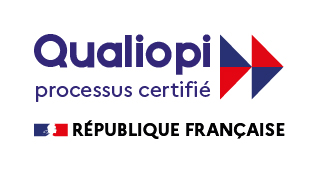Registers the type-parameterized tests TestNames… The test suite and tests must be defined with
TYPED_TEST_SUITE_P and TYPED_TEST_P. The argument TestFixtureName is a fixture class template, parameterized by a
type. Both arguments TestFixtureName and TestName must be valid C++
identifiers and must not contain underscores (_).
Mock objects allow you to set up test scenarios without bringing to bear large, unwieldy resources such as databases. Instead of calling a database for testing, you can simulate your database using a mock object in your unit tests. This frees you from the burden of having to set up and tear down a real database, just to test a single method in your class. A model describing a SUT is usually an abstract, partial presentation of the SUT’s desired behavior. Test cases derived from such a model are functional tests on the same level of abstraction as the model. These test cases are collectively known as an abstract test suite.
Essentially, a mock is a stub object that also includes the expectations (i.e. « assertions ») for proper behavior of the object/method under test. The test driver would order different dishes and ensure the waiter returns the correct dish. Unfortunately, that means that this test of the waiter component may be dependent on the correct behavior of the cook component.
Can be
removed from the listeners list to shut down default console output. Note that
removing this object from the listener list with
Release() transfers its ownership to the
caller and makes this function return NULL the next https://www.globalcloudteam.com/ time. Fired before environment tear-down for each iteration of tests starts. There may be more than one
iteration if GTEST_FLAG(repeat) is set. The methods below are listed in
the order the corresponding events are fired.
Returns the TestInfo for the i-th test among all the tests. Returns the name of the parameter type, or NULL if this is not a typed or
type-parameterized test suite. GoogleTest calls SetUp() before
running each individual test. Performs shared setup for all tests in the test suite. GoogleTest calls
SetUpTestSuite() before running the first test in the test suite. Provides an empty implementation of all methods in the
Deploying model-based testing
TestEventListener interface, such that a subclass only
needs to override the methods it cares about.
Thus, it is possible to develop and test client behaviors for realistic fault conditions in back-end sub-systems, as well as for their expected responses. Without such a simple and flexible mock system, testing each of these situations may be too laborious for them to be given proper consideration. Which out of mock, fake, or stub is the simplest is inconsistent, but the simplest always returns pre-arranged responses (as in a method stub). On the other side of the spectrum, the most complex object will fully simulate a production object with complete logic, exceptions, etc.
If you want to throw
- The result of the test design is a set of test cases based on the specification.
- An executable test suite needs to be derived from a corresponding abstract test suite.
- If
used in a test fixture SetUp() method, it skips all tests in the corresponding
test suite.
- TestFixtureName must be
the name of a test fixture class—see
Test Fixtures.
- Returns true if and only if the unit test failed (i.e. some test suite failed or
something outside of all tests failed).
an exception from this function to skip to the next test, it must be an
AssertionException or inherited from it. Returns the list of event listeners that can be used to track events inside
GoogleTest. Returns true if and only if the unit test passed (i.e. all test suites passed). Returns the TestInfo object for the test that’s currently
running, or NULL if no test is running. Returns the TestSuite object for the test that’s currently
running, or NULL if no test is running. Returns the working directory when the first TEST() or
TEST_F() was executed.
An abstract test suite cannot be directly executed against an SUT because the suite is on the wrong level of abstraction. An executable test suite needs to be derived from a corresponding abstract test suite. The executable test suite can communicate directly with the system under test. This is achieved by mapping the abstract test cases to
GoogleTest
concrete test cases suitable for execution. In some model-based testing environments, models contain enough information to generate executable test suites directly. In others, elements in the abstract test suite must be mapped to specific statements or method calls in the software to create a concrete test suite.
Also note that this is a pretty simplistic example and that mocking frameworks allow for some pretty sophisticated specifications of expected behavior from components to support comprehensive tests. There’s plenty of material on mock objects and mocking frameworks for more information. For example, a mock, fake, or stub method implementation between the two ends of the complexity spectrum might contain assertions to examine the context of each call. For example, a mock object might assert the order in which its methods are called, or assert consistency of data across method calls. Represents a list of types for use in typed tests and type-parameterized tests.
An instance of this class causes a trace to be included in every test failure
message generated by code in the scope of the lifetime of the ScopedTrace
instance. The effect is undone with the destruction of the instance. When the assertion wasn’t successful, the AssertionResult object stores a
non-empty failure message that can be retrieved with the object’s message()
method. GoogleTest defines the following classes and types to help with writing tests. Defines a type-parameterized test suite based on the test fixture
TestFixtureName. Defines a typed test suite based on the test fixture TestFixtureName.
The use of mock objects can closely couple the unit tests to the implementation of the code that is being tested. This illustrates that unit tests should test a method’s external behavior rather than its internal implementation. The improper maintenance of such tests during evolution could allow bugs to be missed that would otherwise be caught by unit tests that use instances of real classes.
Mock object
TestFixtureName must be
the name of a value-parameterized test fixture class—see
Value-Parameterized Tests. Constraint programming can be used to select test cases satisfying specific constraints by solving a set of constraints over a set of variables. A solution found by solving the set of constraints formulas can serve as a test cases for the corresponding system. Tests can be derived from models in different ways.
The more risk the usage of the function/object has, the more thorough the testing that is needed. Risk and complexity analysis determines the test design techniques to be applied for a given specification. It returns 0 if all tests are
successful, or 1 otherwise. GoogleTest defines the following functions to help with writing and running
tests. A value-parameterized test fixture class must inherit from both Test
and WithParamInterface. In most cases that just means inheriting from
TestWithParam, but more complicated test hierarchies may
need to inherit from Test and WithParamInterface at different levels.
To find test cases, the automaton is searched for executable paths. A possible execution path can serve as a test case. This method works if the model is deterministic or can be transformed into a deterministic one. Valuable off-nominal test cases may be obtained by leveraging unspecified transitions in these models. The effectiveness of model-based testing is primarily due to the potential for automation it offers.
If a model is machine-readable and formal to the extent that it has a well-defined behavioral interpretation, test cases can in principle be derived mechanically. Online testing means that a model-based testing tool connects directly to an SUT and tests it dynamically. Because test suites are derived from models and not from source code, model-based testing is usually seen as one form of black-box testing. The test bases, such as requirements or user stories, determine what should be tested (test objects and test conditions). The test bases involves some test design techniques to be used or not to be used.



